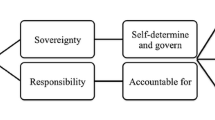Abstract
This response to Lee and Hannafin’s A design framework for enhancing engagement in student-centered learning: own it, learn it, and share it (OLSit) (Lee and Hannafin, Educational Technology Research and Development 64:707–734, 2016) discusses its helpful design guidelines from a practitioner’s perspective. OLSit provides a blueprint for chance-taking with student-centered learning. Here, I apply this blueprint to a flexible assignment colleagues and I designed to promote intrinsic motivation and engagement, called Pink Time (PT), which asks students to “skip class, do whatever you want, and grade yourself.” Together, OLSit and PT are well suited for this moment of disruption and pivot to remote learning. Students’ stereotypes about what is “valid” in the classroom may be important limitations. But iterative and effective communication can shape students’ perceptions and scaffold their efforts. In the future, scholars and practitioners should consider how grades undermine online SCL strategies like OLSit and PT.
Similar content being viewed by others
References
Baird, T. D., Kniola, D. J., Carlson, K. A., Russell, D. G., Hartter, J., Rogers, S., et al. (2020). Adapting pink time to promote self-regulated learning across course and student types. International Journal of Teaching and Learning in Higher Education, 32(1), 49–63.
Baird, T. D., Kniola, D. J., Lewis, A. L., & Fowler, S. B. (2015). Pink time: Evidence of self-regulated learning and academic motivation among undergraduate students. Journal of Geography, 114(4), 146–157. https://doi.org/10.1080/00221341.2014.977334.
Lee, E., & Hannafin, M. J. (2016). A design framework for enhancing engagement in student-centered learning: Own it, learn it, and share it. Educational Technology Research and Development, 64(4), 707–734. https://doi.org/10.1007/s11423-015-9422-5.
Mamun, M. A. A., Lawrie, G., & Wright, T. (2020). Instructional design of scaffolded online learning modules for self-directed and inquiry-based learning environments. Computers & Education, 144, 103695. https://doi.org/10.1016/j.compedu.2019.103695.
Author information
Authors and Affiliations
Corresponding author
Ethics declarations
Conflict of interest
I have no conflicts of interest to declare.
Human and animal rights
This response to a previously published paper contains no research involving human participants and/or animals.
Informed consent
Concerns surrounding informed consent are not applicable.
Additional information
Publisher's Note
Springer Nature remains neutral with regard to jurisdictional claims in published maps and institutional affiliations.
Rights and permissions
About this article
Cite this article
Baird, T.D. Applying the Own it, Learn it, Share it framework to the flexible Pink Time assignment to scaffold student autonomy online and in person. Education Tech Research Dev 69, 105–108 (2021). https://doi.org/10.1007/s11423-020-09837-7
Accepted:
Published:
Issue Date:
DOI: https://doi.org/10.1007/s11423-020-09837-7



